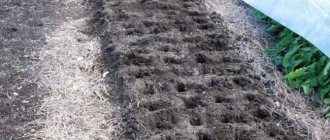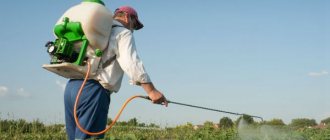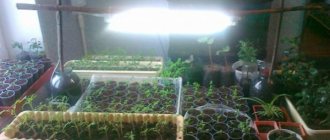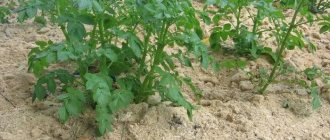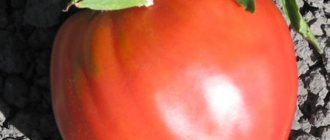For potatoes, it is necessary to prepare fertile and soft soil. Root crops grow well on black soil, loam and sandy loam. If clay soil predominates in the region, then high beds are provided for potatoes, which are reinforced on all sides with boards.
It turns out to be a box that is filled with nutritious soil mixture. What size should the potato plot be? How to prepare it? What characteristics should the soil have?
Features of soil for potatoes
The success of growing potatoes is largely determined by the soil. If soil fertility is easily increased by applying fertilizers, then parameters such as density and acidity can cause difficulties for a novice vegetable grower.
What kind of soil do potatoes like?
Loamy soil is most suitable for potatoes - quite fertile with a granular-lumpy structure, but good water and air conductivity.
The properties are similar to sandy loam. In its lightness and plasticity, such soil resembles sandstone, but it is more fertile, as it is able to retain mineral and organic substances.
A good harvest can be obtained on peat soils and black soils. Chernozem is the most fertile soil with a high content of humus (up to 15%), potassium, as well as organic and mineral compounds that allow the production of phosphorus, nitrogen, and sulfur. The structure is granular-lumpy.
Peat soils are not rich in humus; they quickly absorb water, but also quickly release it. They do not warm up well and often have high acidity. However, peatlands are easy to cultivate due to their ability to retain mineral fertilizers.
Less suitable than others for growing potatoes:
- Sandy soils are light and loose, but extremely poor in humus, so they need to be additionally enriched with nutrients. In addition, sand does not retain moisture well, and in the summer heat the tubers can “burn.”
- The main disadvantage of soil with a high clay content is its high density, which means impaired air and water exchange. In spring, alumina warms up later than other types, and melt water often stagnates on them. Clay soils most often have high acidity.
What soil acidity should be for potatoes?
Potatoes prefer a middle ground - soil that is not too acidic and not too alkaline. The ideal pH range is 5.1 to 6.0. Such soil is usually called slightly acidic.
Too acidic soil makes it difficult for vegetables to absorb nitrogen, potassium, magnesium, phosphorus and calcium. As a rule, such soil is very heavy, so the plant has difficulty accessing water, and the roots do not have enough space to branch well. In conditions of high acidity, pathogens actively multiply.
Alkaline soils are characterized by the presence of minerals in a poorly soluble form, so potatoes may suffer from deficiencies of magnesium, iron, boron and zinc. Alkaline soil reaction is typical for arid steppe and forest-steppe regions.
The most productive
Bellarosa (Bella Rosa, White Rose)
An early variety, the tubers ripen in 70-80 days, for table use, characterized by good yield and taste characteristics. Young potatoes can be dug up after 45 days.
Grows in any soil except loamy soil.
Potatoes become crumbly during cooking.
Characteristic:
A mid-early variety that produces a rich harvest. Tubers ripen in 85-90 days. Demanding on humidity. During drought, it needs watering.
Advice! To increase shelf life, it is recommended to cut off the tops 2 weeks before harvesting.
It does not darken during cooking and is medium boiled. Suitable for frying and fries, salads and cooking. The taste of the fruit is excellent.
Characteristic:
belongings
A mid-season variety that produces a rich harvest even with minimal care. Tubers ripen in 90-110 days. Has a satisfactory taste.
When processed, it does not darken and almost does not boil. Recommended for making potato pancakes, chips, fries and salads.
Characteristic:
Meteor
An early table variety that produces a rich harvest with good taste. Tubers ripen in 65-80 days. Grows well in any soil, but prefers loamy soil. Not afraid of drought and heat.
Recommended for preparing any dishes, especially frying. When cooked, it does not soften and does not change color.
Characteristic:
Svitanok Kyiv
A mid-early universal variety that produces a rich harvest with good taste. The fruits ripen in 82-90 days. Grows well in any soil.
Recommended for making purees. It boils well.
Characteristic:
Soil treatment before planting
Spring cultivation of land for potatoes in open ground begins when the top layer dries out and warms up.
Before planting vegetables:
- The soil is dug up or loosened so that the soil is saturated with oxygen and the roots can develop faster.
- Remove weeds so they do not shade the furrows or compete with the potatoes for nutrients and water.
- Fertilizers are applied to improve soil quality.
Early
Vineta (Veneta)
An early (tubers ripen in 72-80 days), a table variety that produces a rich harvest with good taste of the fruit. Drought resistant.
Recommended for preparing salads, soups, frying and fries. Doesn't boil over. The taste is excellent.
Characteristic:
Zhukovsky early
An early (tubers ripen in 72-80 days), productive table variety with good taste of the fruit. Brings a stable harvest in any weather. Resistant to drought and heat.
The boilability is weak, it darkens slightly during cooking. Recommended for making French fries and chips, and for frying.
Characteristic:
Impala
An early (tubers ripen in 70-80 days), a table variety characterized by good yield and taste. Brings a stable harvest in any weather. Heat resistant.
Interesting! In one season in the South you can grow 2 crops of Impala potatoes.
The taste is good, the pulp does not crumble when cooked. Recommended for making French fries, frying, salads and soups.
Characteristic:
Kamensky
An early (tubers ripen in 72-80 days), table variety, characterized by average yield and good taste. Drought resistant. Requires loosening, responds to fertilizers and watering.
How to determine soil type and acidity
The type of soil in a summer cottage depends on its density, moisture capacity, water and air permeability . To determine the mechanical composition, a lump of earth is moistened and rolled between the palms into a sausage. Sandy and sandy loam soil crumbles immediately - no shape can be formed from it. Clay soil and loam are plastic. To distinguish them from each other, the resulting sausage is folded into a ring: if it works, we have heavy alumina, but if the ring cracks, it’s loam.
The acidity indicator affects the mineral composition of the soil: nutrients in conditions of extremely high or low pH are either absent or are in a form that is difficult for plants to absorb.
The most reliable way to find out the acid-base reaction of the soil is to contact a specialized laboratory or use a kit for independent digital analysis. However, there are other methods.
Features of soil deoxidation
For deoxidation, substances with an alkaline reaction are used:
- slaked lime;
- dolomite flour;
- wood ash;
- ground chalk;
- crushed eggshells;
- gazhu – sediments of lake-marsh reservoirs;
- nitrate fertilizers;
- ready-made complex preparations (“Uglemuk”, “Lime Gumi”).
The frequency and rates of alkalization depend on the initial pH, soil density and the amount of humus in the soil. On heavy clay soils, the deoxidation effect will last longer, so the preparations are applied in larger quantities, but at intervals of 5-7 years.
Reference. Green manure plants also help level out acidity: vetch, phacelia, rye, lupine, oats, and legumes. However, the site needs to be sown with them in advance - during the autumn soil preparation.
The most delicious varieties
Tuleevsky
A mid-season table variety that produces a rich harvest with good taste. Tubers ripen in 90-111 days.
Interesting! It received its name in honor of Aman Tuleyev, the former governor of the Kemerovo region.
It does not like chemical fertilizing and watering, so only humus can be used for fertilizer. If there is a lack of boron in the soil, voids appear inside the fruit.
Recommended for preparing any dishes, but it is best to prepare puree. It cooks medium well and does not darken during processing.
Characteristic:
Picasso
A late table variety that produces a rich harvest of fruits with normal taste. Tubers ripen in 120-140 days. Resistant to drought and heat.
Interesting! It got its name in honor of the artist because of the yellow-pink color of its skin. In Russia people call him Limonka.
Recommended for preparing salads and frying. Does not boil over and does not darken during processing. Used for frying and French fries, salads and soups.
Characteristic:
Adretta
Mid-early (tubers ripen in 83-90 days), a table variety that produces a rich harvest of fruits with excellent taste. Brings a stable harvest and quickly forms tubers in any weather.
Recommended for preparing various dishes.
Characteristic:
How to acidify the soil
If the soil reaction is closer to alkaline, organic fertilizers are added to it: compost with the addition of rotted pine needles and sawdust, high peat, fresh manure.
Organic matter delicately acidifies the soil, additionally making the soil looser and more breathable. If you need a quick result, use mineral compounds: ferrous sulfate, ammonium nitrate.
Reference. Colloidal sulfur significantly lowers pH, but acts slowly, so it is applied mainly during autumn digging (100 g per 1 sq. m). Also come with ammonium sulfate and potassium sulfate.
Green manure
The soil after potatoes is depleted and loses its beneficial properties. You can enrich the soil not only with fertilizers, but also with green manure. This is a series of plants that help saturate the soil with microelements and other useful substances. What to sow after potatoes to improve the soil? You can choose the following green manures.
- Cereals and legumes saturate the soil with nitrogen.
- Cruciferous, legumes and asteraceae - protect the site from weeds and erosion, make the soil structure looser and lighter.
- Crepes and reps – increase the level of organic matter.
- Mustard - removes phosphates from the soil.
- Radish – prevents the loss of minerals.
Soil cultivation after potatoes consists of removing plant residues, loosening and sowing green manure. In this case, several types of the above plants can be used simultaneously.
Ways to improve soil quality
Knowing the characteristics of the soil, you can significantly improve its quality:
- lighten or tighten;
- enrich with humus;
- correct mineral imbalance.
Fertilizers
Fertilizers are divided into organic and mineral. The former are valued for their naturalness, ease of absorption, and rich chemical composition. Mineral mixtures are good when you need to add one or more substances in a certain dosage.
When planting potatoes, first of all, nitrogen-containing compounds are used, as they accelerate the growth of green mass in plants:
- fresh or semi-rotted cow manure;
- compost;
- urea (carbamide);
- ammonium nitrate;
- complex mineral fertilizers (“Ammophos” and “Diammophos”).
However, the most important element for potatoes is potassium, and it is better in sulfate form. In turn, potassium is well absorbed if used in conjunction with phosphate fertilizers: phosphate rock, simple and double superphosphate, as well as in the form of combined mixtures - “Nitrophoska” and “Nitroammofoskie”.
Reference. These fertilizers are applied evenly over the area of the area for digging or directly into the hole during planting.
Green manure
Green manure is used:
- to repel pests;
- for soil improvement;
- to enrich the soil with useful microelements.
In spring, sowing of green manure begins immediately after the snow melts. For this purpose, cold-resistant plants are chosen, since they must sprout in low temperature conditions, and by the time the potatoes are planted, they must already have mature shoots. Mustard, rapeseed, rye, oats, and phacelia meet the stated requirements. If you plan to grow green manure at the same time as potatoes in the inter-rows, the choice falls on legumes, calendula and nasturtium.
To repel insects and prevent diseases, mustard and colza are used against wireworms and late blight, and flax against the Colorado potato beetle.
Reference. The ideal spring green manure before planting potatoes is phacelia. It is frost-resistant, loosens the soil well, increasing its breathability, reduces soil acidity, helps in the fight against root-knot nematodes, repels locusts, suppresses the spread of root rot and late blight, and displaces weeds.
Disinfection
To protect potatoes from pathogenic fungi, bacteria and viruses, tubers and soil are treated:
- a weak solution of potassium permanganate;
- copper sulfate;
- boric acid;
- Bordeaux mixture;
- ash.
For more reliable protection, industrially produced fungicides are used: Fitosporin, Quadris, Maxim, Immunocytofit, Prestige and others. When using them, you must follow the directions on the package exactly and do not exceed the recommended dose.
Ash
Ash is an excellent fertilizer of natural origin. It has an impressive chemical composition, in which calcium and potassium occupy a special place.
The main purpose of ash before planting potatoes is to increase the plant’s resistance to various diseases and to disinfect the soil. Good results are obtained by applying fertilizer directly into the hole.
Attention! Ash does not combine well with fresh mullein, so it is better not to use them at the same time. But it is effective in combination with peat and compost.
Loosening
Potatoes love loose, oxygen-filled soil. In such conditions, nothing interferes with the development of its root system and the formation of large tubers.
Loosening the soil before planting potatoes should be thorough - to a depth of 15 to 30 cm. It is advisable to loosen alumina and loam in two steps to avoid stagnation of water. The area is dug up to the depth of a spade bayonet, then the clods of earth are broken up with a rake.
Reference. Sometimes ordinary loosening and digging is not enough. Then the heavy soil is lightened by adding sand, crushed sifted bricks, and plant residues burned together with the soil.
Autumn preparation
Autumn preparation of land for potatoes differs significantly from spring. To begin with, the bed is dug up with all layers wrapped. Plowing should be done to the depth of a bayonet shovel (about 30 cm). After plowing, under no circumstances should you level the ground with a rake. It is necessary that all harmful organisms and weed roots do not survive the winter. Leveling the ground is done exclusively in the spring immediately before planting. In autumn, it is necessary to add organic fertilizers to the soil. During the period of rains and spring melting of snow, they will dissolve and be completely absorbed into the ground.
Compost fertilizers are also applied in the fall to improve the future harvest. They are harvested throughout the spring-summer period. Compost is placed directly into the furrows and covered with soil. Manure and coal are added together with compost.
If it was not possible to fertilize the soil in the fall, it is allowed to carry out all these actions in the spring. However, autumn fertilization of the land is most effective and shows the best results.
How to choose the right place to grow potatoes on your plot
When choosing a place to organize potato furrows, take into account:
- Illumination of the area. Potatoes love light. In partial shade and shade, the tops develop slowly, and the tubers are small and in small quantities.
- Humidity. Vegetables cannot be planted in soil with stagnant water - the seed will rot before it has time to start growing.
- Protection from winds. Preference is given to areas planted on the north side with trees or shrubs. This will protect the soil from erosion and the plantings from hypothermia.
Selecting the right crop rotation
It is better to plant potatoes in virgin soil. But in practice, you have to change garden crops or plant it in the same place. Due to the presence of common pests with nightshades (tomatoes, eggplants, peppers), it is not recommended to plant potatoes after them. Areas where cabbage used to grow are also not suitable. The reason is that a lot of lime is used to combat its diseases, which increases the likelihood of potato scabs. It is allowed to alternate planting potatoes with beets, zucchini, onions, cucumbers, beans and peas. You can return to your old place after 3 or 4 years.
10 things to do at the dacha in April
